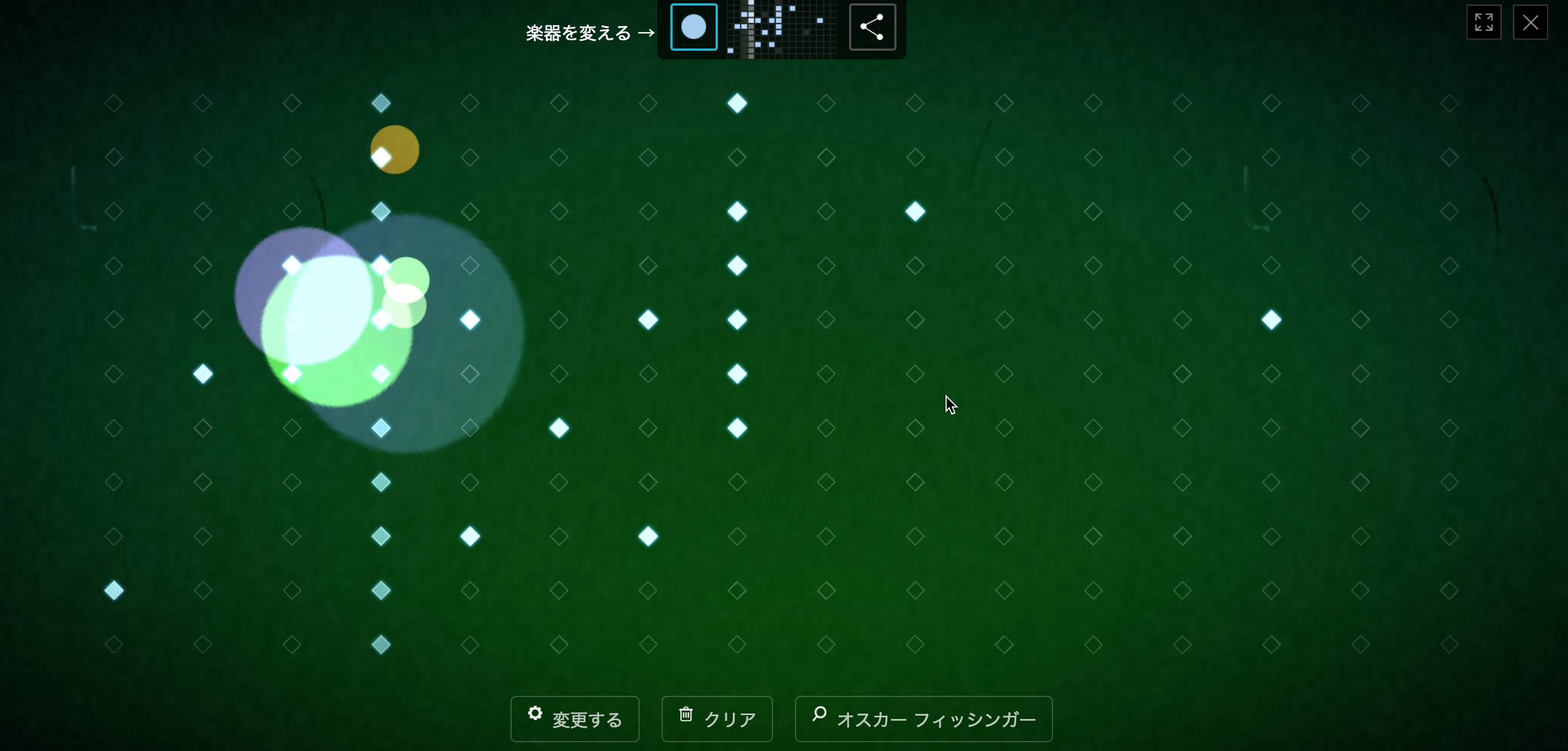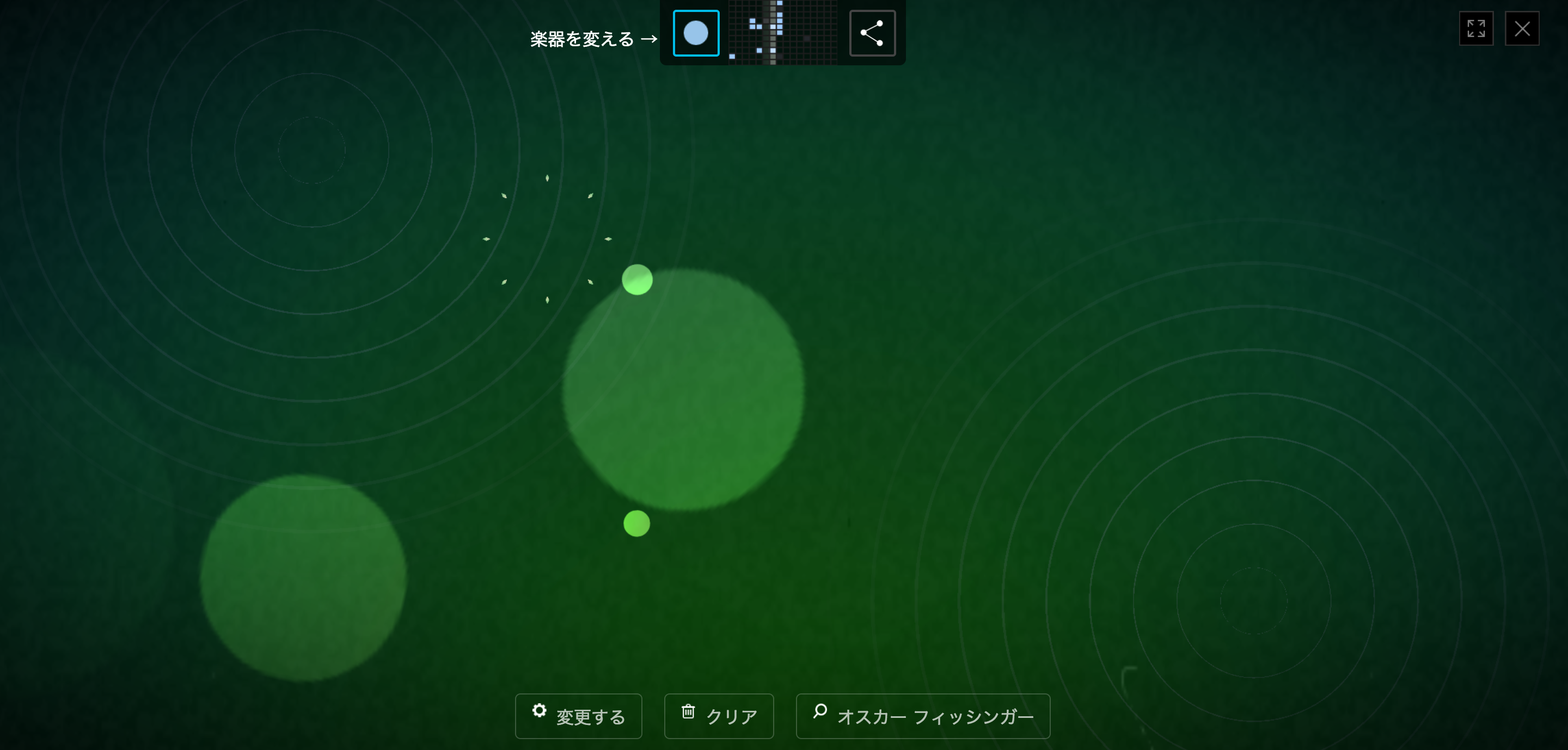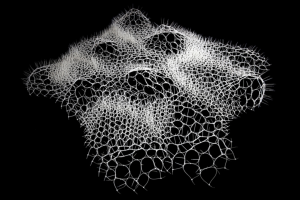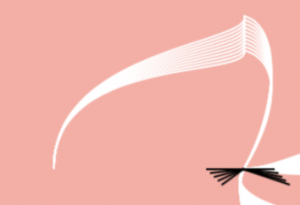foijsaofijewoidffdsoho
Month: September 2017
kyungak-lookingoutwards-04
(Anders Lind, LINES, 2016)
LINES is an interactive instrument that is electrically programmed to trigger sounds. It uses the program Max/MSP to convert physical signals into multiple sound outputs that are then combined to creatively compose a song. To be specific, when the signal is detected, the distance sensors primarily send the stimulus to the arduino board which then is sent to the Max/MSP program to produce physical sounds.
I found this project extra fascinating because it allows a single participator to play the “LINES” instrument as if multiple people are cooperating. By simply placing the metal stimulator on the lines, the participator can easily make chords without having to constantly touch the lines. Without prior knowledge to play the instrument, one could easily play around and quickly learn to utilize this instrument. Also, the sounds that are produced through the “LINES” is very unique and interesting.
alchan-Looking Outwards 04
Chelpa Ferro is a multimedia art group whose work primarily revolves around sound, in one form or another. One of their installations, Acusma (2008), combines recorded sound and traditional Brazilian pottery spread throughout a space. Though I wasn’t able to find much information on the actual process behind the work, the sounds used in the work appear to have been originally recorded, then manipulated by an algorithm to play back with various modifications or repetitions. The result is a chorus of sounds that are voice-like, but is just removed enough to be not quite just a group of human voices.
I really appreciate the juxtaposition between this process and the other main part of the work, traditionally made pottery. This combination of new and old, as well as that of the sounds themselves coming from such unexpected places, also seem to be typical of how the artists are trying to explore sound—making both the sources of sounds and the sounds themselves unfamiliar to the viewers/ listeners.
yoonyouk-LookingOutwards-04
Using Beethoven’s ballet with Houdini to create generative art, artist Simon Russell used this project in order to combine both visuals and audio. Each visual takes pitch and speed into consideration. These characteristics determine the shape and the amplitude. Rather than animating every little piece individually, this piece is dependent on generative factors.

From the clapping at the beginning, to the maestro, to the composition and organization of the generative art, Russell sets the scene of the orchestra. This generative art piece seems to display the different instruments or components of the orchestra. Russell explores the different colors that would represent each component. Rather than being completely obvious with instrument of music forms, he successfully uses abstract shapes that go along with the music. He did not just utilize music notes but also sound waves to make everything look cohesive.
Bettina-LookingOutwards-04-SectionC


Screenshot from the interaction Google Doodle page
This Google Doodle released by Japan has a grid of rhombuses the user can click or unclick. A vertical bar travels across the columns “playing” the “notes” of clicked rhombuses the user has selected. I’m fascinated by how such a simple interaction/interface transcends language (I have no idea what the context of this piece is) and is accessible to anyone. A casual user can press random keys and enjoy various tunes. Someone with a trained ear can figure out the key the notes are in, which buttons correspond to which notes, and try to compose a piece. The geometric, abstract visuals are reminiscent of fireworks, not unlike the magical shows one might see at Disney!
Given my current knowledge of javascript, I could see something like this being constructed with conditionals and the playing controlled by for loops. However, I am eager to learn how to program UI animations such as fades and light-ups in a compact way!
Jdbrown – Looking Outward (4 – Sound Arts)
http://www.cmu.edu/news/stories/archives/2017/august/butterfly-sounds.html
This module has got me very excited, since sound art is what I do. As a composer and a music technician, I love the aural world and especially integrating physical computing with sound production. For my post this week, I’m doing some #self-promotion and showing folks a project I worked on last spring. In a class called Experimental Sound Synthesis, I and a bunch of other students created a generative sound installation at the Phipps Conservatory.
We used Pure Data patches running on Raspberry Pi microcomputers to generate and propagate our designs throughout the space.
myoungsh looking outwards 3
I came to CMU with a background in product design and I did most of my work by hand in a metal and wood shop never really being able to make the leap to bigger CNC or printer type tools. I found a Project, while it is an interesting application of CNC tools and a beautiful project what interested me most about it was the guy’s thoughts on how he was using the tools. He talked about how his use of the CNC tools allowed the project to be shared, meaning him posting the plans (files) he created and used for the project. I thought that was an interesting side to CNC machining because I am not so sure I 9would be willing to replace working with regular power tools or even could with now automated technology. I understand robotics work great for mass production and have personally used 3D printing as a great prototyping tool but neither have replaced hand craftsmanship in metal or wood for custom projects as far as I can tell.
hschung-LookingOutwards-03
Reverberating Across the Divide: Digital Design Meets Physical Context from Madeline Gannon on Vimeo.
I looked at the project “Reverberating Across the Divide” by Madeline Gannon. I thought it was really interesting because it took a thorough route of combining digital and physical input and output. This was my first time being exposed to the topic of a chronomorphologic modeling environment. I’m especially impressed with the complexity of technology that is now possible in order for the designer to have been able to scan and create forms virtually, taking influence and depth from the real world. “A depth camera translates a physical space or object into a three-dimensional point cloud,” which allows her to create the expressive, exoskeleton-like forms that have strong influence from both the digital scans and physical features. I am a product design student, so I know a bit about 3D printing- but I didn’t know about the possibilities of scanning a physical form and then altering it in virtual reality. It excites me to think that if these technologies are possible for this whimsical project that created interesting, decoration-like forms, advancements in other areas like treating broken bones can also be made; I heard about 3D printing casts a few years ago, so I’m sure the tech has become more efficient since then.
hannajan-LookingOutwards-3

According to the artist Sui Park, SPUME presents “soft flows of evolving sentiment.” This gives a feeling of flow, and the artist herself likens her art to emotions and sentiments, which are not static.
The algorithms to create her art looks as if they are built upon each and every additional “stitch” or piece to make up a whole. Although, it is not specified what algorithm was used exactly.
This reminds me that in all the projects I do in the future, it is always important to remember which message I want to convey to all those who view it. Instead of always just worrying about the technical and aesthetic aspect of the art I am producing, I feel that the inside main message that the art is conveying is equally important. Although her art is technically static, it looks to be continuously flowing.
cduong-project 04-string art
//Name: Colleen Duong
//Section: D
//Andrew ID: cduong@andrew.cmu.edu
//Project-04: String Art
function setup() {
createCanvas(400, 300);
}
function draw() {
background(244, 174, 163);
//Variables
var x; //x-coordinate
var y = 100;
//I wanted the lines to be close together so I made the range pretty small
//The Head of a Flamingo
for(var x = 0; x < 20; x+=2){ //Range: 0 to 20
stroke(255);
curve(100, 200, 200, 100, 200, x+20, 73, 61); //Same y2, y3,and x3 values to make sure that the emerging lines connect at the same point to make a coherent bird head shape
curve(200, 400, 100, 100, 200, x+20, 73, 10);
}
//Flamingo Wing1
for(var x = 0; x < 60; x+=2){ //Range: 0 to 60
noFill();
stroke(255);
curve(0, 0, 200, 100, 400, x+20, 73, 61); //Same x2, y2, and y3 as the head of the flamingo to make sure that the wings connected in the same place as the neck
}
//Flamingo Wing2
for(var x = 0; x < 30; x+=2){ //Range: 0 to 30 (I wanted this wing to be shorter than the one that's closer)
noFill();
stroke(255);
curve(200, 0, 200, 100, 350, x+20, 73, 61); //Same x2, y2, and y3 as the head of the flamingo to make sure that the wings connected in the same place as the neck
}
//Flamingo Body
for(var x = 0; x < 100; x+=2){ //Range: 0 to 100 (Bigger range because the body is bigger)
noFill();
stroke(255);
curve(400, 0, 200, 100, 300, x+120, 400, 0); //Same x2 and y2 as the head of the flamingo to make sure that the wings connected in the same place as the neck
curve(400, 0, 500, 180, 300, x+120, 200, 400);
}
//BowTie
for(var x = 0; x < 10; x+=2){ //Range: 0 to 10
noFill();
stroke(0);
line(199, 100, x+180, x+y);
line(199, 100, x+215, x+y);
}
//Orange Water
for(var x = 0; x < 400; x+=4){ //Range: 0 to 400 (I wanted the river to be gigantic and I made the value in between each x to be larger to spread out the lines more so they wouldn't merge into a solid shape)
noFill();
stroke(243, 204, 143);
curve(400, 400, 20, 200, 390, x+300, 400, 400);
}
//Blue Water
for(var x = 0; x < 400; x+=6){ //Range 0 to 400 (To make the water look somewhat multi colored I put blue on top and put a different x+= value so it wouldn't completely overlap)
noFill();
stroke(183, 221, 239);
curve(400, 400, 20, 200, 390, x+300, 400, 400);
}
}
I wasn’t really sure what I wanted to draw at first so I started to play around with the for loop and curves until I made a really interesting shape, which is the beak/head/neck of the swan that I drew and from there I just continued to draw a swan. 
It was really fun to play around with the curves to try and make an abstract drawing. Hopefully you see what I was trying to draw, which is a swan (who is wearing a bowtie) flying over a river.
![[OLD FALL 2017] 15-104 • Introduction to Computing for Creative Practice](../../../../wp-content/uploads/2020/08/stop-banner.png)